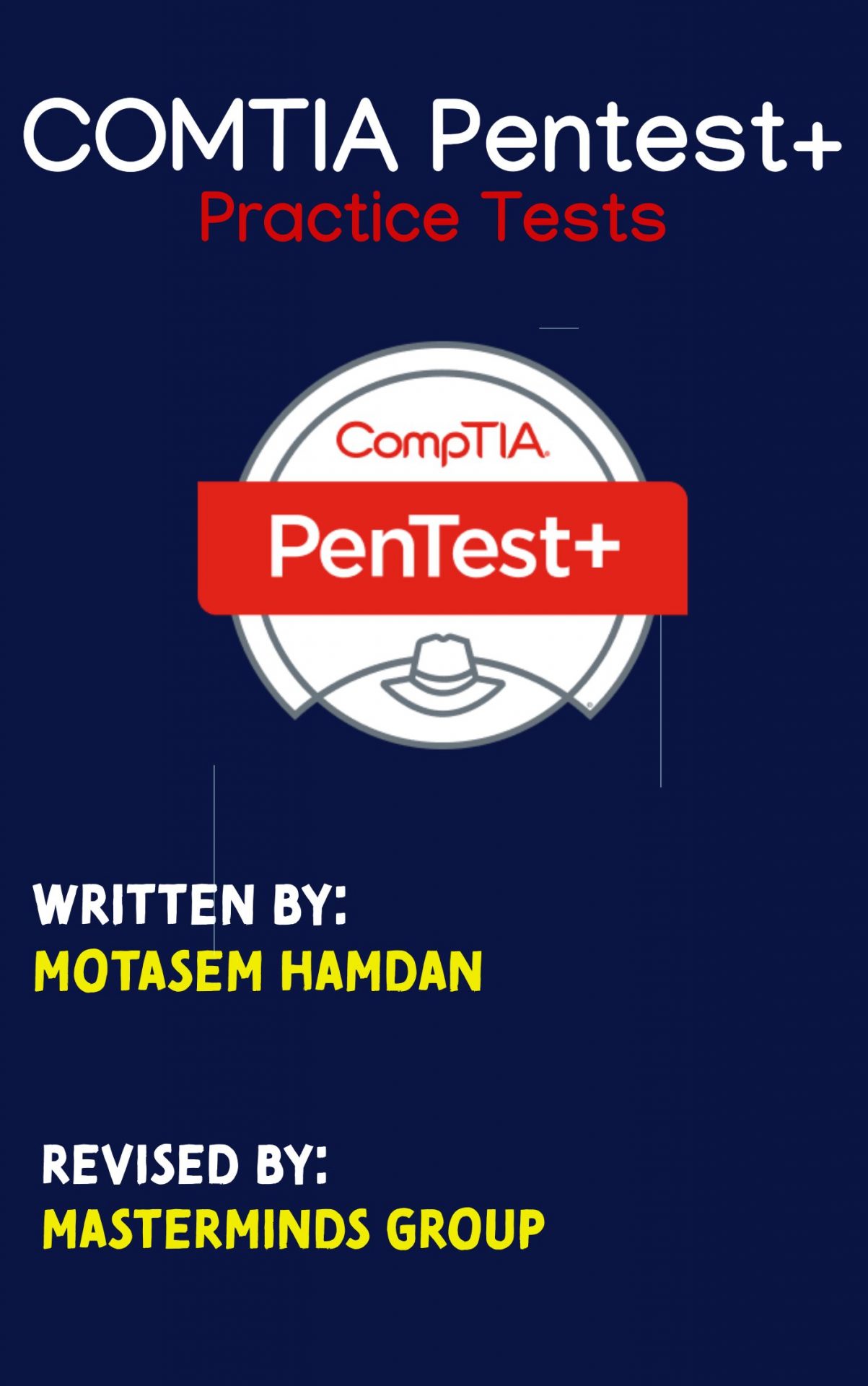COMPTIA Pentest+ Practice Test
Whether you’re a cybersecurity professional looking to validate your penetration testing skills or an aspiring ethical hacker pursuing industry-recognized certification, this book is designed to help you succeed in your journey toward earning the CompTIA PenTest+ (PT0-002) credential.
The PenTest+ certification is a globally respected standard that demonstrates your ability to plan, scope, and execute penetration testing engagements. It assesses not only hands-on technical skills but also your understanding of legal and compliance requirements, communication, and reporting, making it one of the most well-rounded certifications in the offensive security domain.
This book contains a series of full-length practice tests that mirror the structure, difficulty, and content areas of the actual exam. Each question is crafted to challenge your knowledge and reinforce core competencies across the five major domains defined by CompTIA:
- Planning and Scoping
- Information Gathering and Vulnerability Scanning
- Attacks and Exploits
- Reporting and Communication
- Tools and Code Analysis
You’ll also find detailed answer explanations and references for every question to support active learning and help you identify areas for improvement. Whether used as a final review or an ongoing study tool, this book will help you gauge your readiness, build test-taking confidence, and ultimately, pass the PenTest+ exam.
COMPTIA Pentest+ Exam Details
The CompTIA PenTest+ (PT0-002) exam covers several domains related to penetration testing and vulnerability assessment. Familiarize yourself with the exam structure:
- Number of Questions: 85 questions.
- Question Types: A mix of multiple-choice and performance-based questions (PBQs). PBQs involve real-world simulations where you need to perform tasks like scanning, exploiting vulnerabilities, and analyzing results.
- Time: 165 minutes.
- Passing Score: 750 out of 900.
- Prerequisites: CompTIA recommends you have CompTIA Security+ certification and at least 3-4 years of hands-on experience in security.
COMPTIA Pentest+ Exam Objectives:
- Planning and Scoping (14%)
- Information Gathering and Vulnerability Identification (22%)
- Attacks and Exploits (30%)
- Reporting and Communication (18%)
- Tools and Code Analysis (16%)
The COMPTIA Pentest+ Practice Test & Exam
The COMPTIA Pentest+ Practice Test & Exam is a rich collection of scenario-based questions and answers covering penetration testing phases, tools, vulnerabilities, and legal considerations.
COMPTIA Pentest+ practice test contains four practice tests with 227 total number of questions along with their answers
Page count: 98
Format: PDF



Testimonials (LinkedIn)
How to Get The COMPTIA Pentest+ Practice Test?
You can buy the booklet directly by clicking on the button below
You may also check out the COMPTIA Pentest+ study notes if you are looking for study notes to prepare.
COMPTIA Pentest+ Exam Domains
Domain 1: Planning and Scoping (14%)
- Scope of Engagement: Understand how to define engagement scope, rules of engagement (RoE), legal and compliance considerations.
- Agreements: Learn about Statements of Work (SoW) and Non-Disclosure Agreements (NDAs).
- Risk Analysis: Recognize how to analyze organizational assets and risk tolerance levels before a penetration test.
Domain 2: Information Gathering and Vulnerability Identification (22%)
- Footprinting and Reconnaissance: Master passive and active reconnaissance techniques like DNS enumeration, port scanning (Nmap), WHOIS lookups, and network mapping.
- Scanning: Know how to perform vulnerability scanning using tools like Nessus, OpenVAS, or Nikto.
- Analyzing Scan Results: Learn how to analyze vulnerability reports and interpret findings from scanning tools.
Domain 3: Attacks and Exploits (30%)
- Exploitation: Learn how to exploit vulnerabilities in web apps, networks, and systems. Focus on buffer overflows, SQL injection, cross-site scripting (XSS), and privilege escalation.
- Password Attacks: Familiarize yourself with password cracking, brute force, and dictionary attacks using tools like John the Ripper or Hashcat.
- Social Engineering: Understand different social engineering techniques, such as phishing and physical attacks.
Domain 4: Reporting and Communication (18%)
- Writing Penetration Test Reports: Know how to prepare and communicate findings in reports, including providing remediation recommendations for vulnerabilities found.
- Risk Rating: Understand how to prioritize vulnerabilities using CVSS (Common Vulnerability Scoring System).
- Post-Engagement Activities: Be aware of post-engagement activities, such as evidence retention and client debriefing.
Domain 5: Tools and Code Analysis (16%)
- Penetration Testing Tools: Familiarize yourself with tools like:
- Nmap (for network scanning)
- Metasploit (for exploitation)
- Burp Suite (for web application testing)
- Wireshark (for packet analysis)
- Hydra (for password attacks)
- Nikto (for vulnerability scanning)
- Scripting: Be comfortable with basic scripting using Python, Bash, and PowerShell. This is essential for automation during penetration tests.
Practice Performance-Based Questions (PBQs)
PBQs simulate real-world scenarios, requiring you to apply your skills rather than just answer multiple-choice questions. Here’s how to prepare:
- Kali Linux: Make sure you’re comfortable using Kali Linux, which is widely used for PenTest+ PBQs.
- Hands-On Practice: Practice tasks like performing scans with Nmap, exploiting vulnerabilities with Metasploit, and analyzing traffic using Wireshark.
- Capture the Flag (CTF) Challenges: Platforms like TryHackMe and Hack The Box can help you simulate the PBQ experience.
Take Practice Exams
Taking multiple practice exams will help you familiarize yourself with the question format and manage time effectively.
- MeasureUp: Provides official CompTIA practice exams.
- Examcompass and Whizlabs: Offer free and paid PenTest+ practice questions.
- CompTIA PenTest+ CertMaster Practice: CompTIA’s official practice exam tool.
As you go through practice exams, focus on:
- Time Management: You have 165 minutes for 85 questions. Practice managing your time efficiently.
- Review Weak Areas: After each practice exam, review your incorrect answers and revisit those topics.
Free COMPTIA Pentest+ Training
Checkout the playlist below on my YouTube channel for free COMPTIA Pentest+ Training
